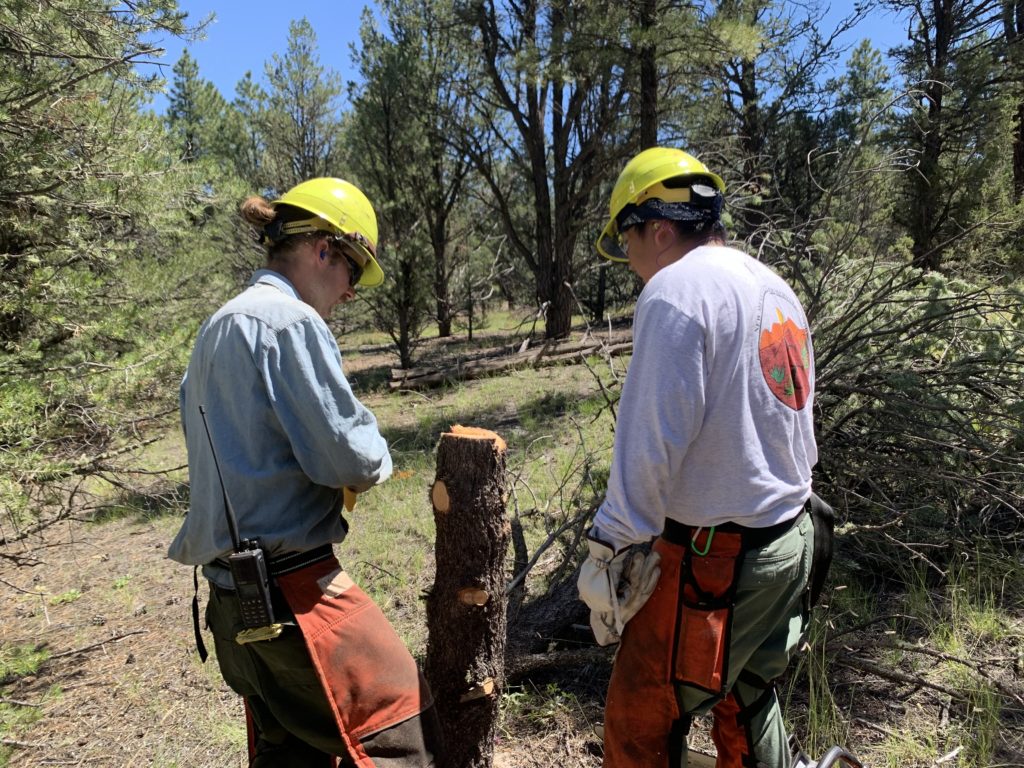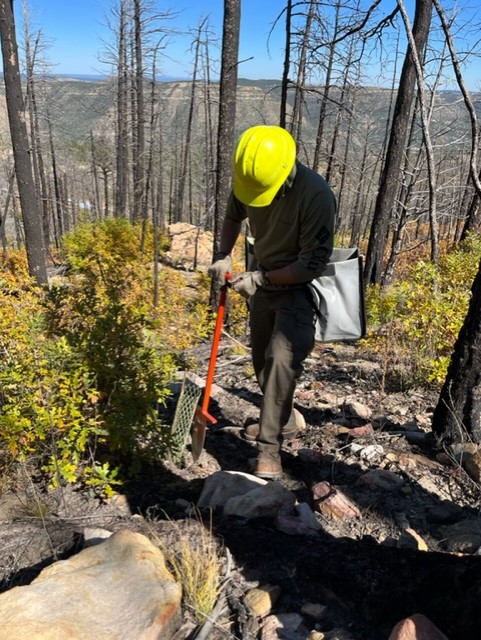Planting Future Stewards

Fall Fire and Fuels Program crew of FSYC walking to work site
Written by Cora Stewart
This fall, Forest Stewards Youth Corp (FSYC) Fire and Fuels Program had a successful season, completing important natural resource projects alongside work partners. The program consists of three crews, each with 4-5 individuals, including a crew lead. Crews are located across Northern and Central New Mexico, with the Espanola Ranger District on the Santa Fe National Forest, Mountainair Ranger District on the Cibola National Forest, and the Pueblo of Jemez Natural Resource Department. Each crew worked alongside their partners on forest management projects, such as fuels reduction, fire line construction, fence building, and recreation trail building. The goal of this program is for members to gain relevant experience, training, and certifications so they may move up into natural resource positions. Members participate in a two-week training where they receive courses required to be type 2 wildland fire fighter and feller certified. Upon successful completion of an arduous pack test, which includes walking 3 miles in under 45 minutes with a 45-pound pack on, members receive their red card, which they can use to apply to other agencies.

Sam Berry, Southwest Associate Director, showing member Dorian Coriz, how to analyze felling chainsaw cuts.
Another goal of the fall Forest Stewards Youth Corps program is to provide capacity for agencies to perform prescribed burns during the off-season. However, crews faced a unique challenge this year, as prescribed burns were federally ordered to be put on pause for most of the fall. This was due to the Calf Canyon and Hermits Peak fire in northern New Mexico, which was started by an escaped prescribed burn. Although members expected to gain experience in prescribed burns and wildland fire fighting, they instead gained an understanding of the dynamic nature of land management, as well as experience in rehabilitation and reforestation.

Philmont plant seedlings getting ready for placement and planting.
Outside of the work crews did with their districts and departments, the 2022 FSYC fire and fuels crews participated in a research project on reforestation through the University of New Mexico. This project looked at a strategic planting model, using topography and surrounding species, to see if it is possible to increase the success rate of tree planting from 25% to 60% in the southwest. Members spent three weeks planting over 12,000 baby ponderosa pine trees. The plantings were across three different burn scars with varying levels of burn severity, time since the fire, and elevation. The sites were in Jemez, Mora, and Cimmaron, New Mexico. Hillsides were selected based off slope, and members were instructed to plant by Gamble Oak, as its roots bring water closer to the surface, making it easier for the planted ponderosa pines to survive. This project is still ongoing, as the University of New Mexico team monitors tree planting success and analyzes the results.

Crew member Devin planting a Philmont seedling.
As the threat of wildfire and climate change increase across the nation, it is important for young people to be part of projects like these. Not only did the Guild’s youth corps crews plant trees in the southwest, but the Guild’s Oregon State University student chapter also participated in a tree planting project in the Pacific Northwest. By involving students and young adults in natural resource management, it is the hope to inspire a future generation of holistic, open minded, and aware forest stewards.
